Boutique coffee micro-roaster "night owl"

Coffee microroaster is the abbreviation of the author for "order small/micro coffee roaster".
After World War II, the global coffee market experienced three waves. The first wave began in the 1950s, represented by canned coffee and instant coffee. The army played an important supporting role in coffee consumption during this period. The second wave began in the 1970s with the Dutch coffee roaster Alfred Bitter, who founded "Beats Coffee" in San Francisco in 1966.(Peet's Coffee) as the starting point, through the seventies and eighties of gestation and development, to the nineties "Starbucks" throughout the world, during this period, Ms. Knudsen fine coffee concept proposed (1974) and the birth of the American Fine Coffee Association (1082) and growth, for the development of the coffee industry played an important role; The third wave began in the millennium, marked by the pursuit of transparent and personalized manor coffee from seed to cup. Coffee roasters such as STUMPTOWN, INTELLIGENTSIA and COUNTERCULTURE in the United States were the leaders of the coffee movement during this period. With the ups and downs of these three waves, coffee roasting has also separated from the commercial mass roasting in the past into small/micro roasting orders, which are roasted at any time to meet the increasing requirements of coffee drinkers for quality and freshness. Self-produced self-roasting coffee shops have sprung up all over the world. Whether this kind of characteristic order small/micro roasting can maintain survival and development is a question that many people pay close attention to. With the same thinking, the author specially visited several fine coffee roasters in Portland, which are at the forefront of the fine coffee industry in the United States. The "Night Owl" introduced here is a typical representative of the "Micro-roaster".
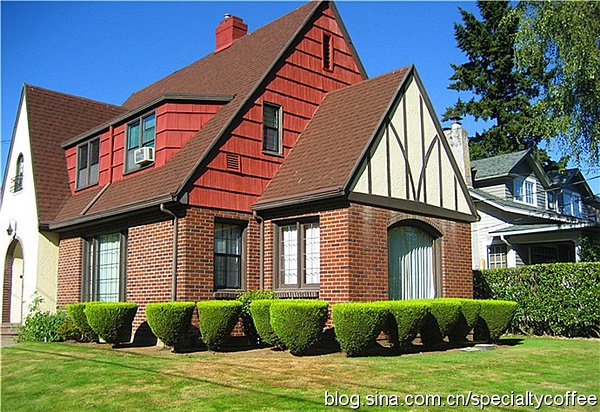
Blake Fowler, owner of Night Owl Coffee Roasters, met me at the American Fine Coffee Association Roasters Guild Annual Gathering at the Scamania Lodge in Stevenson, Washington, in late August 2010. The deal was, I'd visit him in Portland after the party.
Mr. Black was a very welcoming man and I got an email from him when I arrived in Portland and turned on my computer, offering to show me around some of the city's famous coffee roasters. Considering that he had just returned from a party, must have orders to fulfill, and Portland was easily accessible, I declined his offer and let him roast coffee for clients.
Blake and Katie are the two main employees of the Night Owl Fine Coffee Micro Roaster. They had formal biological training and embarked on careers in biofuels research and medical device manufacturing and botany. Coffee roasting was only their hobby, but they were attracted by the charm of coffee roasting. For them, the roasting process is fascinating: the raw coffee beans are hard and inedible, but through roasting, they become an extremely aromatic and delicious coffee drink. Blake spent more and more time studying baking and met many coffee friends, so they encouraged him to open this mini coffee roaster, while Katie took orders, shipped and purchased raw beans. The customers of micro-bakers have their own drinking preferences. Since micro-baking can meet the various requirements of customers, it is easy to order and receive goods quickly, and gradually win more customers. Such miniature coffee roasters have sprung up in the United States in recent years.
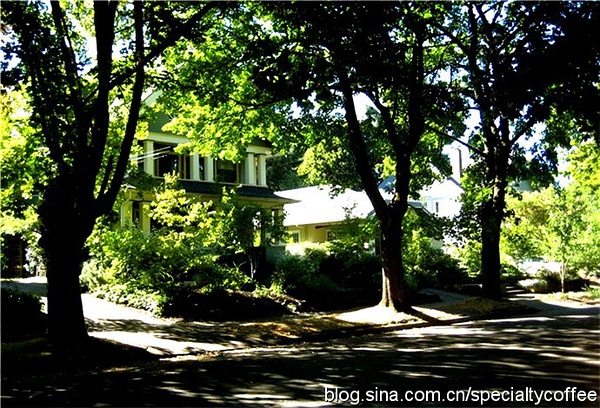
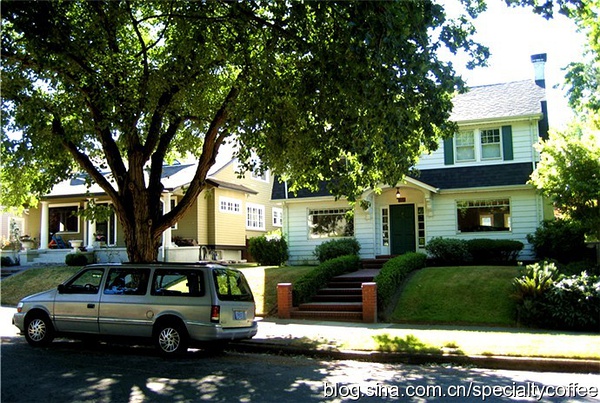
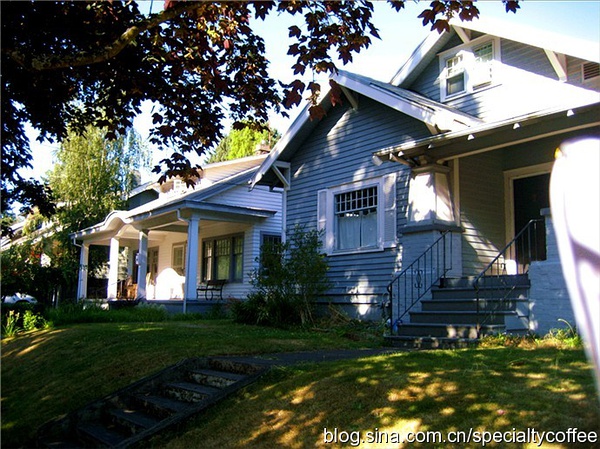
I got off the bus twenty minutes outside the hotel and walked to Blake's Northeast 25th Street. This street is residential, and the tree-lined streets are lined with "villas", which makes me wonder how comfortable coffee roasters can live in such a wonderful environment! Later, when I talked to Blake, I asked him about the house prices in this area. Only then did I know that the houses in this area were more expensive in Portland, about $30,000 or $400,000. This makes me sigh again!
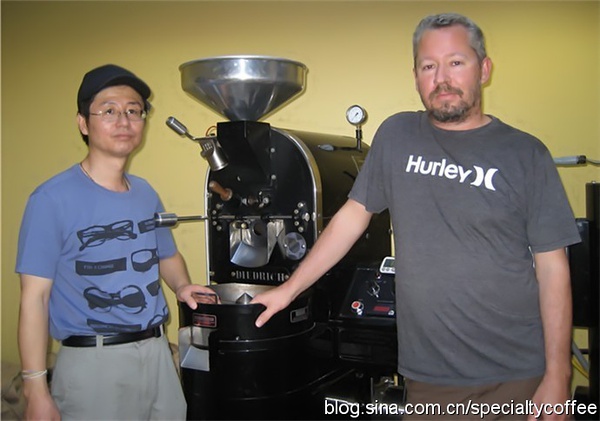
Mr. Blackflower (right)
Blake's micro-roaster workshop is housed in a separate room in the backyard of a villa and uses a Diedrich gas-heated floor-standing coffee roaster, the first brand in North America, similar to one of the four machines we use in SCAA's annual coffee roaster competition, except that Diedrich's latest desktop model is used. Due to environmental requirements, the roaster is equipped with a rear burner system. The afterburner system consumes three times more gas than coffee roasting, so I suggest Blake retrofit the water-cooled smoke eliminator.
After visiting the roaster room, Blake uses a press pot to craft Sumatra's finest mantinin coffee. Sitting at the wooden table in his courtyard, sipping a mouthful of freshly roasted and made coffee, I felt full of fragrance, overall balanced, rich, thick and sweet aftertaste. At home, we mostly use commercial grade Sumatra Mantelin, and have no particular preference for its taste, especially the herbal bitterness, but this fine Mantelin sweeps away the impression of Indonesian coffee. No wonder it's fine coffee, no wonder it's micro-roasted! I think that's what attracts coffee lovers.
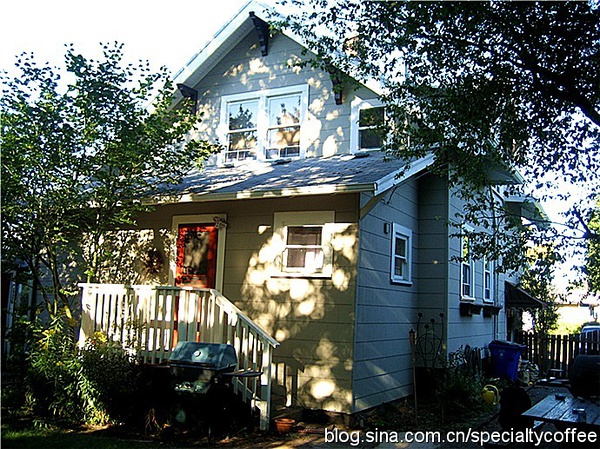
Blake's house from the backyard
After coffee, Blake drove me back to the hotel in his Volkswagen Beetle. As I waved goodbye, I wished and believed that its Night Owl boutique coffee micro-roaster was getting better and better. His demeanor and lifestyle made me feel the meaning of a phrase I often hear: enjoy coffee and enjoy life.
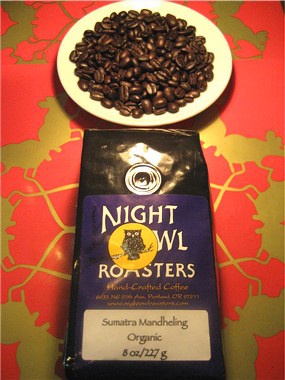
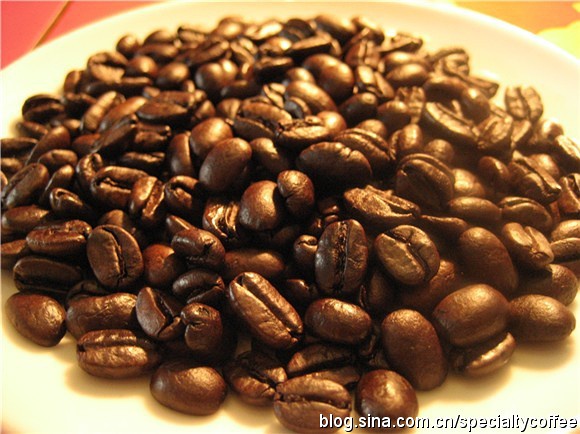
"Night Owl" is a fine product of the slightly baked merchant Mantenin
Important Notice :
前街咖啡 FrontStreet Coffee has moved to new addredd:
FrontStreet Coffee Address: 315,Donghua East Road,GuangZhou
Tel:020 38364473
- Prev

It is inappropriate to drink coffee immediately after drinking.
After drinking, alcohol is quickly absorbed by the digestive system and then enters the blood circulatory system, affecting the gastrointestinal, heart, liver and kidney, brain and endocrine systems, and leading to disorders of glucose metabolism, protein metabolism and fat metabolism in the body. among them, the most direct and serious victim is the brain. Caffeine, the main ingredient of coffee, can stimulate the central nervous system and muscles, and accelerate aging.
- Next

Boutique coffee micro-roaster "night owl"
Coffee micro-roaster is the abbreviation of order small / micro coffee roaster (Micro-roaster). After World War II, the global coffee market experienced three waves. The first wave began in the 1950s, represented by canned coffee and instant coffee, and the army played an important supporting role in coffee consumption during this period; the second wave began in the 1970s.
Related
- Cudi stores ban other brands of coffee?! Netizen: No problem
- Is it better to make coffee cold or hot? Why is it recommended to drink hot coffee?
- Lucky people collapsed! The store ceiling is full of AI surveillance cameras?!
- Law Enforcement Bureau? Mixue Ice City enters Zhengzhou BRT platform!
- Heavy! Nestlé has been exposed to consider selling blue bottle coffee!
- Compensation of 270 million yuan! Starbucks has been charged with violating labor laws more than 500,000 times!
- What are Xizhao coffee beans? Why did they become champion beans? How to rush to the manor on the dividing line in Colombia?
- What does channel effect mean in coffee? Why are there holes in the coffee powder cake?
- How much do you add to the milk for latte, Australian white and cappuccino? What is the ratio of coffee to milk between latte and frill?
- What is the cause of coffee astringency? Why does the brewed coffee feel astringent?

